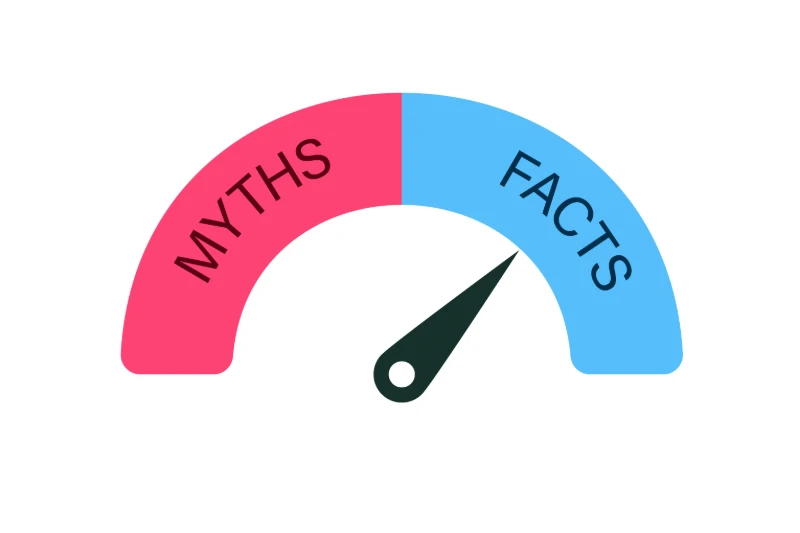Homebuyer 101: #13 Loan Types
Homebuyer 101: Loan Types
Ever wondered about the multitude of loan types available to prospective homeowners? It’s akin to choosing the right tool for a specific job.
Navigating through VA, FHA, and Conventional loans might seem as complex as a labyrinth, but fear not, guidance is on hand.
As with selecting the perfect Colorado Springs neighborhood, picking a loan type requires an appreciation of nuances and a strategic approach tailored to your financial landscape.
VA Loans: Zero Down Payment
VA loans entice with the allure of a zero down payment feature, offering remarkable financial relief at the initiation of homeownership. Unlike conventional loans, veterans or active military members can leap over the upfront cash hurdle with ease, paving a smoother entry into the housing market.
Given the absence of required down payment and mortgage insurance premiums, VA loans epitomize affordability and value for eligible service members. This loan type’s preferential interest rates further sweeten the deal, reducing the lifetime cost of borrowing and underscoring its appeal for those who’ve served our country.
Recognize a VA loan as a token of gratitude for military service—a powerful financial instrument that diminishes barriers to unlocking the door to a new home. With veteran status comes a pathway to homeownership unencumbered by the typical financial roadblocks faced by many.
Eligibility Criteria
VA loans underscore service, catering exclusively to veterans and select military personnel.
Not all dreamers wear uniforms, but for those who do, homeownership awaits without the burden of down payment.
FHA loans offer a lifeline to first-time buyers, demanding modest down payments and forgiving credit imperfections.
Conventional loans favor the prepared, rewarding those with solid credit and savings with potentially lower costs over time.
No Mortgage Insurance
Eliminating mortgage insurance can lead to substantial savings, cutting monthly expenses and reducing the cost of your home over time.
- Conventional Loans: Once you’ve achieved 20% equity in your home, mortgage insurance can often be removed, unlike FHA loans.
- VA Loans: Offer no mortgage insurance ever, due to their unique benefits for military members.
- Lender-Paid Mortgage Insurance: Some lenders offer conventional loans where they pay the mortgage insurance in exchange for a slightly higher interest rate.
The absence of mortgage insurance is not just an immediate financial relief but also a long-term benefit that accrues as you build equity.
With strategic financial planning, homebuyers can expedite reaching the 20% equity milestone, sidestepping mortgage insurance premiums faster.
Funding Fee Explained
A funding fee is a type of one-time payment made at the initiation of the loan, typically associated with government-backed loans, ensuring program sustainability and offering benefits like low to no down payment options.
Not all loans require a funding fee. Conventional loans, for example, do not include this fee.
VA loans levy a funding fee that varies based on factors like military service, disability status, and the number of uses of the VA loan benefit.
The FHA charges a standard funding fee to all borrowers, which helps protect lenders against losses if a homeowner defaults on the mortgage.
While the funding fee can increase overall loan costs, it can often be rolled into the loan amount, minimizing upfront expenditures but slightly raising the monthly payment.
Remember, although you’re not paying the funding fee out of pocket at closing, it’s still part of your loan balance, adding to the total amount you owe.
FHA Loans: Lower Credit, Lower Down
FHA Loans are tailored to meet the needs of individuals who might face challenges in securing a conventional mortgage due to lower credit scores or limited funds for a sizable down payment. With the FHA program, the door opens to homeownership with a modest down payment requirement of just 3.5%, coupled with more lenient credit guidelines. These advantages make FHA Loans an accessible pathway for many first-time buyers and those re-entering the housing market, striking a balance between affordability and the opportunity to build equity in a home of their own.
Minimal Down Payment
Homeownership might seem like a distant dream if hefty down payments pose a barrier. But don’t fret; there are loan options structured with minimal down payments in mind. Exploring these can transform your perspective from markdown to marked opportunity.
If your pockets aren’t overflowing, an FHA loan may be your saving grace, requiring only a 3.5% down payment on the purchase price. This amount is significantly lower than many traditional mortgages and can put homeownership within reach for those who thought it an impossible goal. Affordable entry points like this are essential in a competitive Colorado Springs market.
Even more tantalizing for eligible veterans or service members is the VA loan, which often demands a grand total of $0 for a down payment. That’s right—zero. This incredible offer makes a home purchase feasible without the upfront financial strain that can deter many potential buyers.
Lastly, some conventional loan programs offer a slender 3% down option, targeted primarily at first-time homebuyers. While these programs have specific qualifications, they present an appealing pathway for individuals to step into homeownership. As always, discussing your circumstances with a knowledgeable loan officer is critical to navigate these opportunities and lay the groundwork for your future home purchase.
Funding Fee and Monthly Payments
A funding fee might sound onerous, but it’s a one-time cost, structured into the loan for specific mortgage types. This fee contributes to the costs of maintaining these loan programs and mitigating risks for lenders. For VA loans, this fee is typically rolled into the total borrowed amount, sparing veterans from immediate out-of-pocket expenses.
With FHA loans, the funding fee is known as the Upfront Mortgage Insurance Premium (UFMIP). At 1.75%, it is a substantial sum, yet crucial in preserving the viability of the loan option for future borrowers. The UFMIP can be financed as part of your loan, softening the initial financial impact and allowing for more immediate home ownership.
Remember, conventional loans evade the upfront funding fee after a 20% down payment milestone is achieved. Until then, Private Mortgage Insurance (PMI) is an added monthly expense, designed to protect the lender until sufficient equity is built up in the home. Once you’ve crossed that threshold, PMI drops off, potentially lowering your monthly payments significantly.
Monthly payments for FHA loans generally include mortgage insurance, regardless of the initial down payment. This insurance persists for the life of the loan unless you choose to refinance into a different loan type. It’s a safety net for lenders but adds a consistent cost to your monthly budgeting as a borrower.
With each loan type, it’s clear that the funding fee and subsequent monthly payments shape the long-term affordability of a mortgage. Discuss these details with your loan officer to understand how they impact your home buying journey in Colorado Springs.
FHA to Conventional Refinancing
Transitioning from an FHA loan to a conventional mortgage can streamline your finances over time, eliminating the persistent mortgage insurance cost. This strategic shift offers long-term savings by reducing monthly expenditures.
FHA’s mortgage insurance doesn’t vanish – refinancing can remedy this. Consider switching to a conventional loan when able to.
A successful transition to a conventional loan often depends on increased home equity and improved credit scores. Achieving the coveted 20% equity mark not only waives future PMI but may also secure more favorable loan terms, interest rates, and reduce total payment commitments.
Converting your FHA loan to a conventional one could be akin to a financial upgrade, offering freedom from mortgage insurance and the potential for a lower interest rate. It requires a close look at your financial health and home equity, and while it may involve upfront costs like appraisal and refinancing fees, the investment can lead to substantial savings and an enhanced sense of security in your homeownership.
Conventional Loans: The Long-Term Choice
Widely recognized as the quintessential homeowners’ dream, a conventional loan becomes increasingly appealing as equity builds. Embarking on this path, equipped with a solid credit history and a reliable income, homeowners can relish in the prospect of lowering monthly payments and obtaining financial liberation. Moreover, once you’ve surpassed the 20% equity threshold, you can bid farewell to the burden of mortgage insurance, thereby reinforcing your long-term economic stability and enhancing your home’s fiscal resilience.
Mortgage Insurance Elimination
Mortgage insurance can often seem like a necessary evil for many homeowners. However, its elimination is a financial milestone marking true ownership progress.
With diligent payments and increasing property values, homeowners can reach a critical equity landmark where mortgage insurance becomes unnecessary. This 20% equity threshold is transformative, shedding the monthly insurance cost from your payment, boosting your budget flexibility, and enhancing your financial freedom. Sustained value appreciation and principal reduction power this shift, pivoting homeowners to a stronger financial stance.
Reaching this milestone isn’t an overnight affair but rather a steady journey of financial discipline. Maintaining punctual mortgage payments and keeping an eye on market trends will eventually tip the scales. When the moment arrives, lenders are required by law to cancel your mortgage insurance, providing a palpable reduction in your monthly obligations and a sense of accomplishment.
For those seeking a proactive approach, refinancing might provide a shortcut to mortgage insurance elimination. With a new appraisal reflecting increased home values and confirming a 20% equity position, refinancing into a conventional loan can extinguish the PMI cost. This strategic move not only diminishes your monthly expenditure but also can secure more favorable terms and rates, bringing long-term financial benefits and the true sense of homeownership sans insurance constraints.
Higher Standards, Potential Lower Costs
The allure of a conventional loan extends beyond the absence of mortgage insurance. Over time, consistent payments build equity, eventually leading to potentially significant cost savings.
Conventional loans embody the epitome of financial trustworthiness. They signal to the market a borrower’s creditworthiness and stability.
Moreover, these traditional loans offer more competitive interest rates for those with robust credit profiles, which translates to savings over the loan’s lifespan.
Entering into a conventional loan agreement signifies an adherence to higher financial standards, often paralleled by lower interest rates and fewer lender fees.
Borrowers who prioritize long-term financial health tend to gravitate toward conventional loans, valuing the freedom and lowered costs associated with building over 20% home equity.
Ultimately, conventional loans are like a badge of honor in the mortgage world. They offer possibilities for lower costs and higher standards, making them the coveted choice for discerning buyers.
First-Time Homebuyer Programs
Navigating the property market can be overwhelming for first-time homebuyers, but luckily, assistance programs can provide much-needed relief. These cater specifically to the needs and challenges inexperienced buyers may face.
Specialized programs often feature reduced down payment requirements. This makes entering the housing market more accessible to those fresh on the property ladder.
With financial education as a core component, these programs aim to prepare homebuyers for the responsibilities of ownership. They demystify the purchasing process by providing resources, support, and sometimes even down payment assistance.
Exploring first-time homebuyer programs reveals a variety of options, from government-backed loans like FHA to local incentives that encourage homeownership. Understanding these offerings is critical for selecting the right path forward. Be sure to engage with a knowledgeable loan officer who can guide you through program specifics and eligibility criteria. Remember, terms like “conventional” or “FHA” are just the beginning of deciphering the right mortgage for you.
Loan Types Compared: Making The Right Choice
When weighing VA, FHA, and conventional loans, it’s vital to consider what suits your individual circumstances. Each loan type brings its own advantages and potential downsides. VA loans, for instance, offer zero down payment and no monthly mortgage insurance but are exclusive to service members. FHA loans are easier to qualify for and require a smaller down payment, yet carry a funding fee and ongoing mortgage insurance. Conventional loans, conversely, while typically demanding higher down payments initially, can eliminate mortgage insurance costs once you’ve reached 20% home equity.
Choosing the right loan type hinges on balancing your financial situation, credit history, and long-term homeownership goals. Your ideal loan should align with your capacity to make a down payment, absorb associated fees, and meet monthly obligations. An informed conversation with your loan officer will help clarify these points, ensuring you make a well-informed decision about your home financing strategy.
Interest Rates and Payments
Interest rates greatly influence your monthly mortgage payment and the total cost over the life of your loan.
- VA Loans often come with the benefit of lower interest rates, making them highly attractive if eligible.
- FHA Loans typically offer competitive rates, particularly advantageous for borrowers with less-than-perfect credit.
- Conventional Loans may offer varied rates based on credit score and down payment, with potential for lower rates as creditworthiness increases.
Securing a lower interest rate can reduce your monthly payment and save you thousands of dollars over time.
Keep in mind, the type of loan determines whether you’ll have to pay monthly mortgage insurance, which can also affect your payment.
Down Payment Requirements
Navigating down payments can be tricky.
The VA loan shines with its iconic zero down payment. Unlike conventional loans that often require a substantial down payment, VA loans facilitate homeownership for veterans by eliminating this upfront financial burden. However, this benefit is contingent upon eligibility and does not sidestep the funding fee, which, albeit financeable, adds to your loan balance.
FHA loans beckon with just 3.5% down.
Entry into homeownership is eased through FHA loans. The 3.5% down payment is considerably lower than most conventional loan requirements – a welcoming feature for first-time buyers or those with limited savings.
Conventional wisdom says save 20%.
A conventional loan’s ideal 20% down payment circumvents private mortgage insurance (PMI), which can yield long-term savings. Less than 20% is possible but comes tethered to additional monthly insurance costs until the borrower’s equity hits the threshold.
Strategies vary by loan type and financial stance.
Flexible options exist beyond the traditional 20%. Certain conventional loans cater to first-time buyers with down payments as low as 3%, though they carry conditional caveats that should be navigated with your loan officer’s guidance, reflecting the ever-evolving lending landscape as of early 2023.
Insurance and Fees
Understanding PMI is crucial when considering loans.
For less than 20% equity, PMI adds to monthly costs. It ensures lenders against default and becomes avoidable as equity grows, disappearing once you cross the 20% equity line.
VA loans have unique funding fee structures.
While VA loans offer 0% down, they include a funding fee, a percentage of the loan added upfront to the balance. This fee, varying for first-time or subsequent use, finances the program’s longevity.
FHA loans combine upfront and ongoing costs.
FHA loans entail an upfront mortgage insurance premium (UFMIP) aside from the down payment. Plus, there’s a mandatory annual mortgage insurance premium (MIP), contributing to monthly expenses over the loan’s life or until refinancing.
Conventional loans provide long-term savings potential.
The absence of PMI with a 20% down payment on conventional loans promotes future savings. However, for downsized down payments, PMI persists until achieving significant equity, underscoring the benefit of assessing financial scenarios with your loan advisor. Balancing upfront costs against long-term expenses, remember “cheap” can be deceptive when evaluating the true cost of a loan.
The post Homebuyer 101: #13 Loan Types appeared first on 719 Lending.
Categories
Recent Posts











